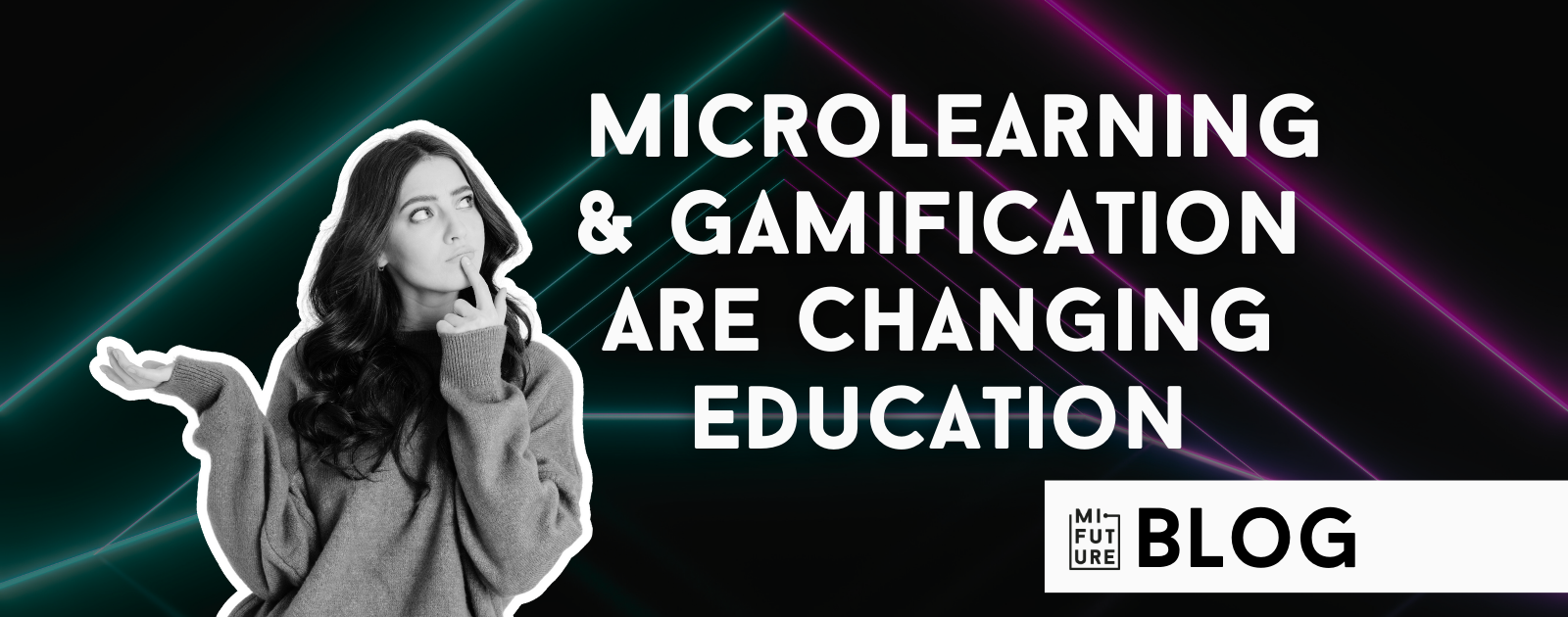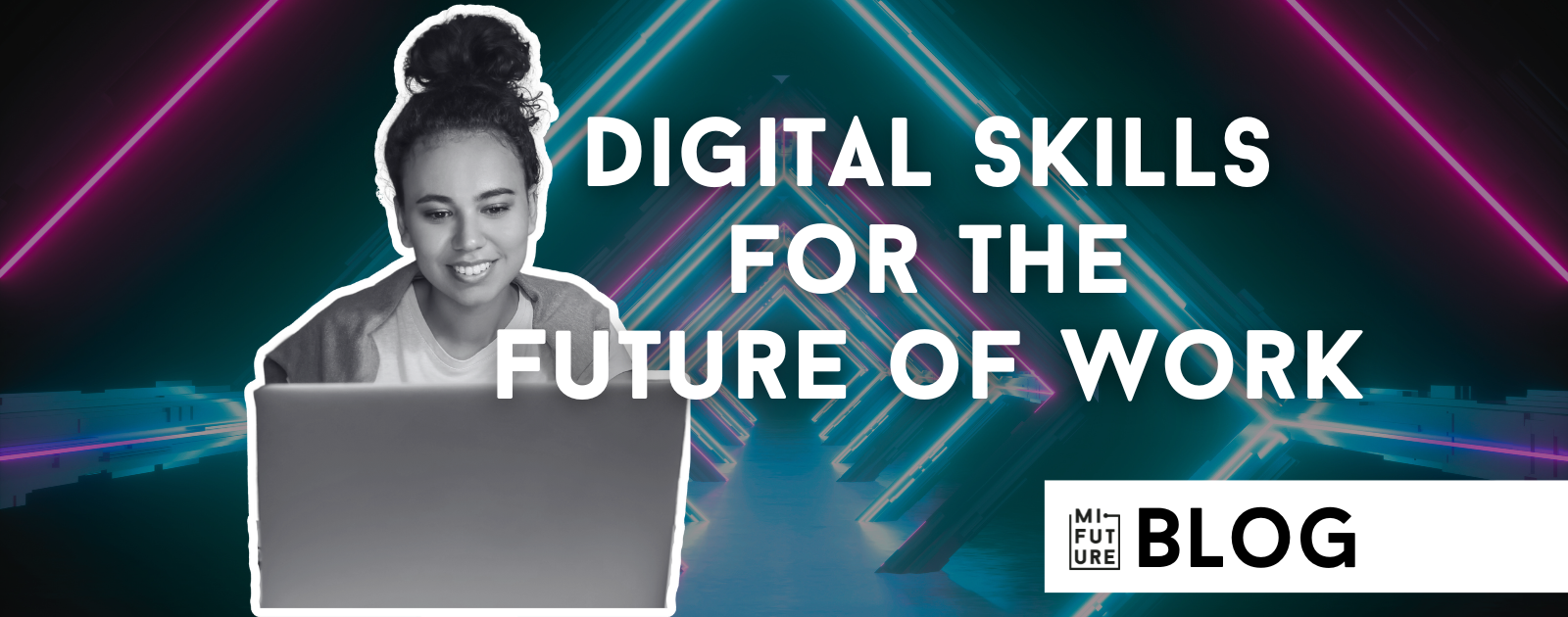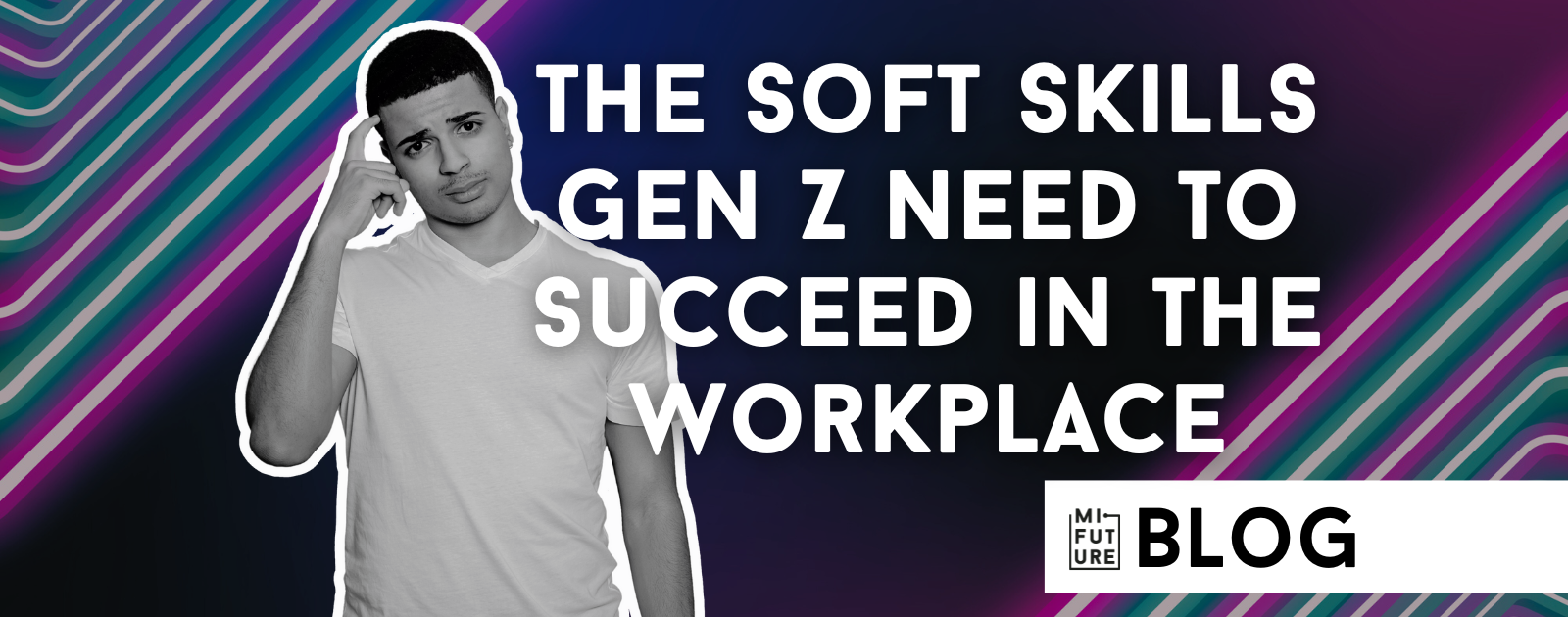
Education is not what it used to be. Gone are the days of long lectures, boring textbooks, and passive learning. Today’s learners are digital natives, who grew up with smartphones, social media, video games, and active learning. They are used to instant feedback, interactive experiences, and personalised content. They have short attention spans, high expectations, and diverse interests.
So, how can educators keep up with these changes and engage Gen Z learners? At miFuture we think the answer is microlearning and gamification.
"We live in a 24/7 on-demand, bite-sized, digital world, and Gen Z know no different. Microlearning and gamification are powerful tools that fit's their digital behaviour and can transform education for Gen Z learners, and be even more relevant, engaging, effective, and enjoyable. They can also help prepare learners for the future by helping them develop skills such as critical thinking, problem-solving, creativity, collaboration, and a behaviour of lifelong learning."
Gemma Hallett
Hmm, what is Microlearning?
Microlearning is a learning method that delivers bite-sized chunks of information in a short time span, usually less than 10 minutes. Microlearning is designed to match the cognitive capacity and learning preferences of the human brain, helping learners focus on one topic at a time, retain information better, and apply it immediately.
We've seen microlearning take various forms, such as videos, podcasts, quizzes, infographics, games, and simulations. They key is that learning can be accessed anytime, anywhere, on any device, and increasingly personalised to suit the learner’s needs, goals, and preferences.
And What is Gamification?
Gamification is the application of game elements and mechanics to non-game contexts, such as education. Gamification aims to make learning more fun, engaging, and motivating. It uses elements such as points, badges, levels, leader boards, rewards, challenges, and feedback to create a game-like experience for the learners. Think SnapChat streaks here; A streak or a "snapstreak" is a representation of how many days in a row you've managed to send photo or video snaps back and forth to a friend, a Gen Z'er said streaks are a "fun thing to brag about to your friends" and another said "I lost a 185 day long snap streak and it was definitely heart-breaking."
Why are Microlearning and Gamification the Future of Education?
There is more and more evidence to suggest that microlearning and gamification can are proven methods of improving learning effectiveness, efficiency, and satisfaction.
🙂 A 10-minute microlearning course has a completion rate of about 83%, whereas a traditional learning and development course has a much lower percentage of 20%-30%.
👍 Most employees (80%) prefer microlearning over traditional learning approaches.
👆 Completion rates for microlearning modules are high, ranging from 70% to 80%.
🆙 Microlearning results in learner engagement to soar from an industry average of 15 percent up to 90%.
😃 Microlearning is 17% more efficient than traditional, longer-duration courses.
🧠 Gamification lowers the mental barriers to absorbing new information.
🎮 Gamification enhances message retention for learners
Not only fun, engaging, and appealing to the Gen Z learner but they are also effective in delivering learning outcomes. They are also aligned with the changing needs and demands of our digital world, where information is abundant, time is scarce, and skills are constantly evolving.
How can we Implement Microlearning and Gamification in Education?
Though they are proven methods, they are not necessarily magic bullets that can solve all the challenges of education. Their implementation require careful planning, design, and evaluation to ensure their success.
Here's some ways we think you can do that:
💡 Define the learning objectives and outcomes clearly. What do you want your learners to know, do, or feel after completing your microlearning?
💡 Choose a format and platform for your content. Consider the type of content (textual, visual, auditory), the device (desktop, mobile), and the delivery mode (online, offline).
💡 Use gamification elements strategically. Don’t just add points or badges for the sake of it. Think about how they can support your objectives and learner motivation.
💡 Balance challenge and reward. Consider achievable progression, with incremental difficulty. Provide them with feedback and guidance along the way.
💡 Test, Iterate, and Analyse. Something often forgotten is collecting data on how learners interact with microlearning content and gamified features. Use this data to improve your design and delivery.
Want to dive a little deeper into microlearning and gamification? Try them out yourself, check out EdApp or Quizizz which offer great templates and ready made subject games. You can also browse through their eLearning statistics to get more insights into the trends and best practices.
Gem Hallett, miFuture, Founder.
About Gemma Hallett
After a 10 year teaching and education management career spanning pre-16 and post-16, in both FE and HE. Gem left teaching to pursue a mission of building an EdTech brand that will help school leavers bridge the skills gap and make careers in the emerging and growth sectors more visible for Gen Z seeking alternatives to university.




